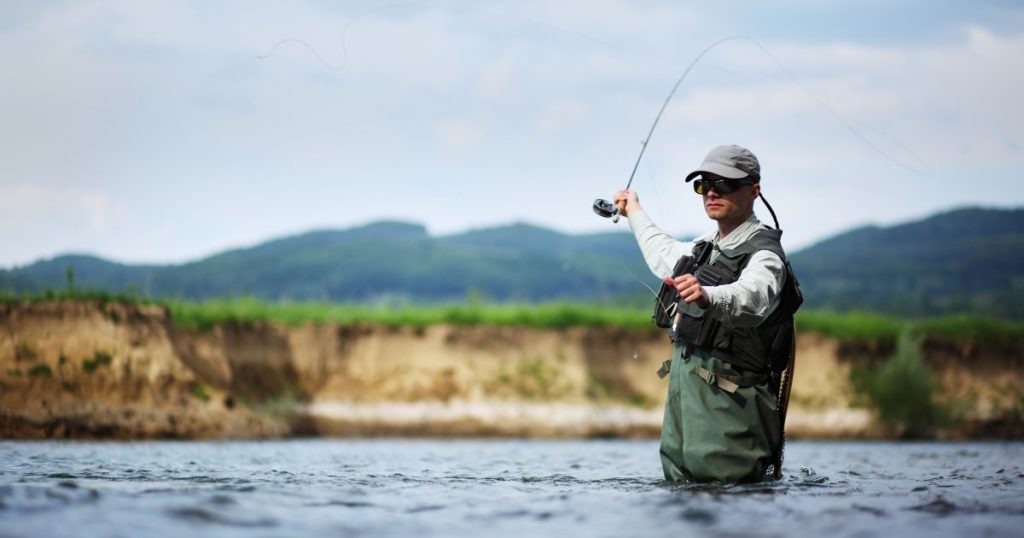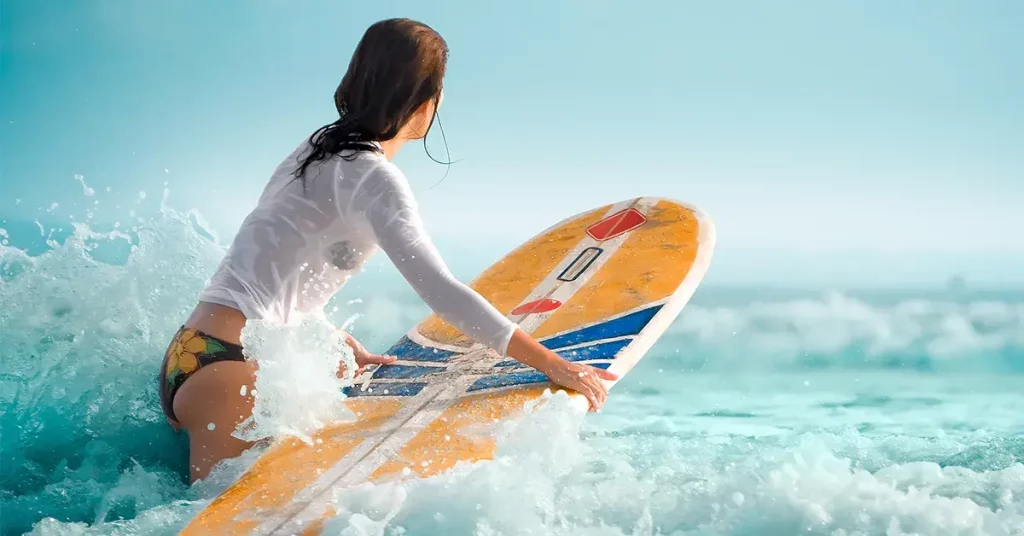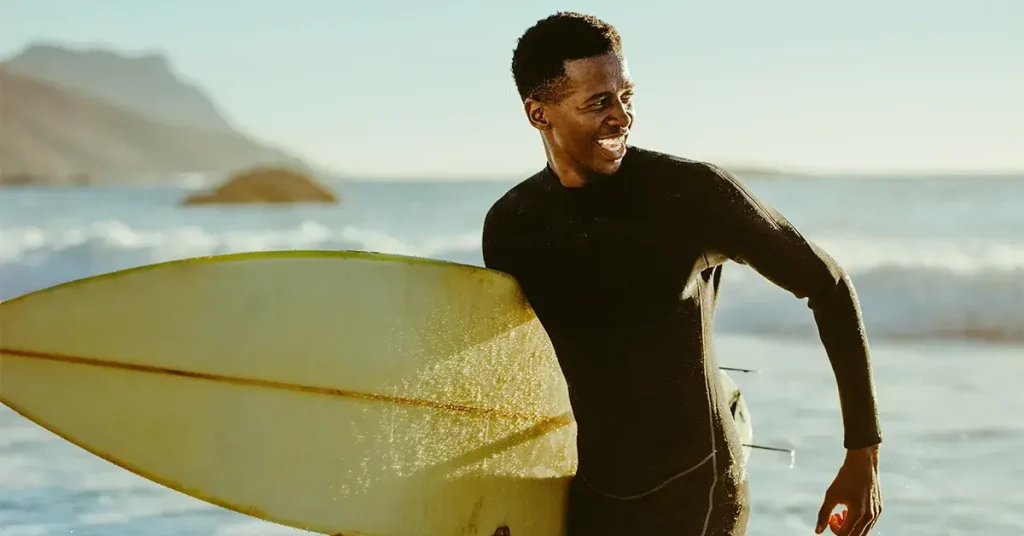Fly fishing is an ancient angling method that has fascinated nature lovers for ages. It’s the technique of throwing a feather-light fly line, carefully placing an artificial fly on the surface of the water, and persuading fish to take a bite.
Fly fishing, which has its origins in traditional fishing methods, has developed into a distinctive and engrossing activity that combines talent, endurance, and a love of nature.
Whether you are an experienced angler or new to the sport, understanding the foundations of fly fishing is critical to unlocking its majesty and attraction. Keep reading and explore the art of fly fishing, including its history, casting techniques, gear, and more.
Tracing the Origins of Fly Fishing
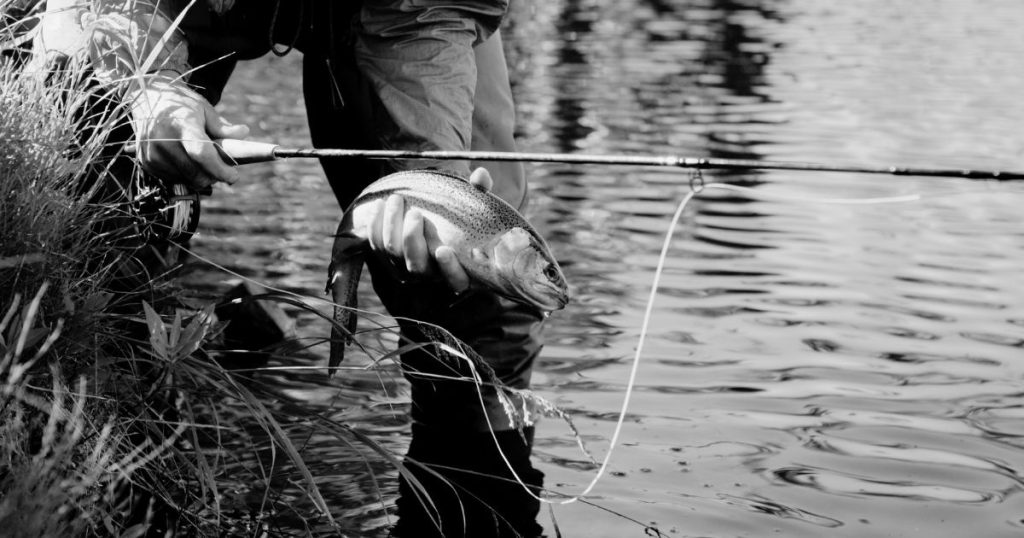
Fly fishing is a form of fishing that has a long history that dates back thousands of years. Similar to spearfishing, it is an ancient practice, with proof of its use appearing in ancient Egypt, Rome, and Greece.
Fly fishing was largely used as a source of food in these prehistoric societies, and the earliest flies were created of organic substances like feathers, fur, and silk.
Over the years, fly fishing methods and gear underwent constant development. The sport was transformed in the mid-19th century by inventions like the creation of silk fly lines and split bamboo poles, which made it available to anglers from all walks of life.
When it comes to the USA, fly fishing became popular in the 20th century. It was a result of the innovations made by legendary people like Theodore Gordon and Lee Wulff. They were the ones concerned with the question of what is fly fishing and the ones who promoted catch-and-release fishing methods to protect fish populations.
Fly fishing is now a widespread activity, with American fly anglers engaging in it in a variety of landscapes, from pure rivers to isolated mountain streams. However, since this kind of fishing is typically not ideal for winter, many people choose ice fishing during the cold season.
What Is Fly Fishing: Setting the Stage
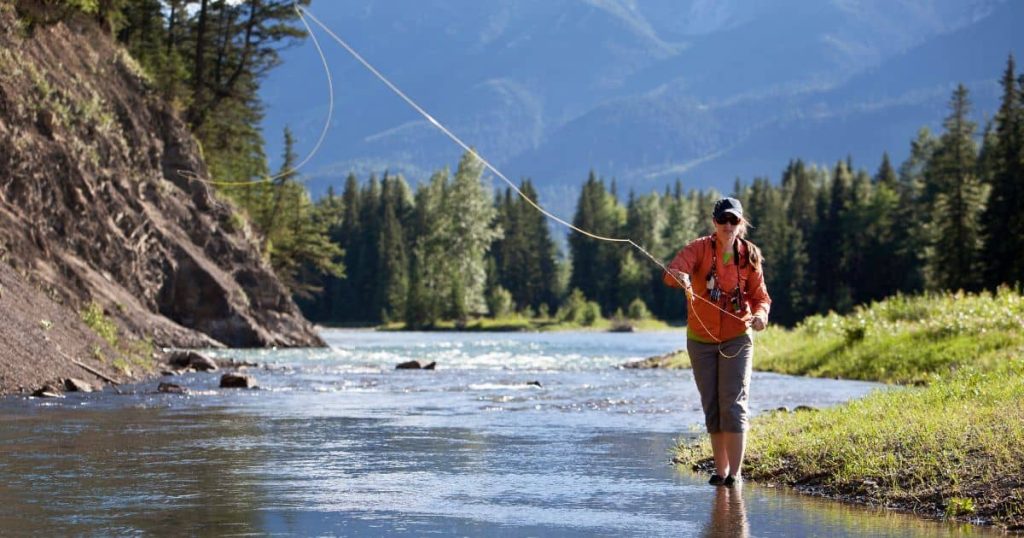
Fly fishing is a distinctive and gratifying form of angling, but it needs a specific gear set up in order to be successful. Setting up for fly fishing takes careful attention to detail and knowledge of the equipment required – you need to choose the proper types of flies, reels, and lines to tie on the proper leader and tippet.
However, in order to fully understand what fly fishing is, let’s see how to set up your fly fishing equipment.
Pick the Right Fly Rod
Your fly fishing gear is mainly supported by your fly rod. Your fly fishing equipment’s performance as a whole, casting distance, and precision are all determined by it.
When choosing a fly rod, take into account the type of water conditions and fishing you intend to perform, such as freshwater fishing or saltwater fishing. In addition to that, make sure you know the fish species you are aiming for, as well as the type of fishing flies you will be employing.
Warm-water species differ from those in freshwater. For instance, you should master the basics of trout fishing if you choose to fish for brown trout.
The main way fly rods are categorized is by weight. If you’re going after smaller types of fish, use lighter fishing rods, and if you’re after larger fish, use heavier artificial lures and fishing rods. Make sure the fly rod you select is appropriate for your fishing needs and ability level.
Select Fly Line
Following the selection of your fly rod, you must select a fly reel and line that complement the rod.
For optimal balance, the fly reel and fly rod’s weights should be equal. In accordance with the rod’s requirements, the fly line’s weight should likewise match that of the rod.
Fly lines are available in different varieties, including floating, sinking, and sinking-tip lines, each of which is created for a particular fishing scenario. Choose the proper one to go with your rod.
Once you’ve selected the ideal fly line, attach it to the reel.
Join the Leader and Trippet Together
The leader and the trippet are essential for tricking the fish. They are the monofilament or fluorocarbon segments that join the fly line to the fly. The leader normally has a thicker butt end and narrows down to a tippet segment that is connected to the fly.
Use a nail knot or a loop-to-loop connection to join the leader’s end to the fly line. Then, use a doctor’s knot or a blood knot to secure the tippet to the leader’s end.
Tie on the Fly
Tying on the fly is the last stage in putting up your fly gear for fishing. Choose a fly that is appropriate for the circumstances and the species of fish you are after.
According to the type of fly and your fishing scenario, use a clinch knot when tying on the fly. Also, make sure the fly is correctly secured to the tippet and that the knot is tight.
Check Your Setup
After constructing your fly fishing equipment, spend a moment checking all of the connections and knots.
Make sure the leader and tippet are securely fastened, and that the fly line is correctly placed onto the reel. To make sure that everything is well-balanced and ready for casting, test the rod’s motion and make any required modifications.
Now you understand what fly fishing is and how to set up your first set of equipment. Good luck!
Fly Fishing Casting Techniques
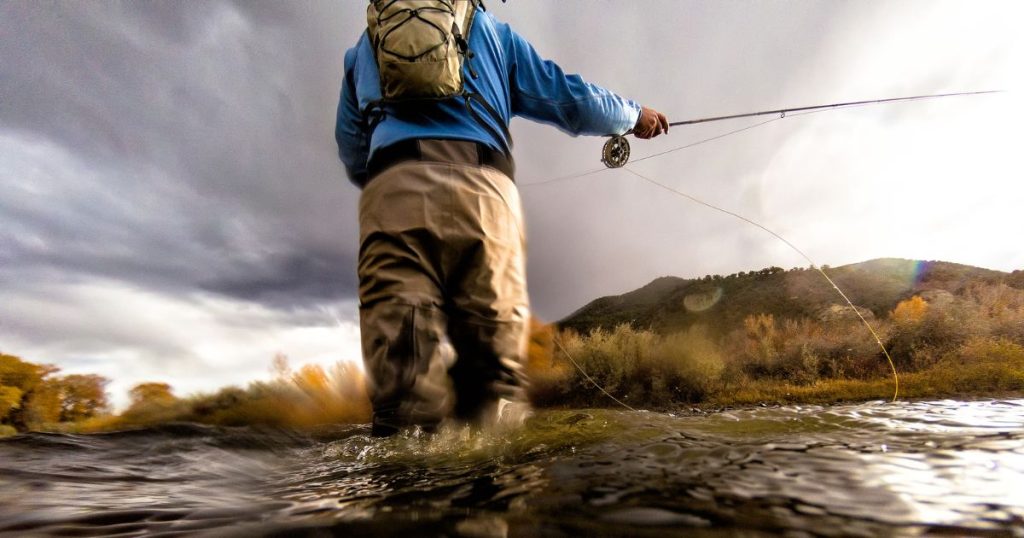
Now that we know what fly fishing is, we can proceed with some fly fishing casting techniques. Here are the top 3 casting techniques to assist you in better understanding fly fishing and how to execute it.
The Roll Cast
This is one of the most straightforward casting methods. It is specifically designed to make it easier for you to cast in confined spaces.
Since the majority of your success is reliant on getting your flies in the water, this cast will provide you with that assurance. Here’s how to do it:
- First, make sure your line is in the water and the tip of your rod is behind you.
- The rod tip should be facing outward, and your hands should be crossed over your shoulders.
- Check to see that your line is directed in the route that you wish to cast.
- Make a D-loop with your fly line to load your cast.
- Once you’ve made the cast, maintain the rod tip at the level of your eyes.
Double Haul Cast
The double haul is a pretty simple technique. This technique is often used by saltwater fishermen in order to extend the reach of their flies.
Here is how to execute it:
- To begin, flip your wrist in both ways while making your standard fly cast.
- Pull downward on the loose line as you flick your wrist back into the rear cast. Your line will be tightened and will give a greater bend as a result.
- Keep using the same action for the whole forward cast. Flick your wrist upwards while simultaneously pulling downward on your slack fly line.
- Continue doing this until your cast is at the preferred range.
Tuck Cast
This type of cast is frequently used by nymph fishers and enables your nymphs to sink quickly and efficiently.
This cast’s objective is to get your nymphs in the water before your fly line. It is widely employed in the world of euro nymphing, where weighted flies are most common.
However, here’s how to do it:
- Make a basic cast upstream to get started.
- Elevate the rod tip just a little bit as you cast upstream. This will enable nymphs to sink more quickly.
- Check to see that your fly line is in the water before your nymphs.
- To optimize the presentation of your nymphs, steer clear of a sudden lift of the rod tip. Use a gentle lift instead.
What Is Fly Fishing? Final Thoughts
To sum it up, let’s briefly repeat what fly fishing is! Fly fishing is a distinctive and alluring angling method with a long history behind it. It’s an immersive experience that necessitates patience, accuracy, and appreciation for the natural environment due to its distinctive casting techniques.
Make sure you fully understand what fly fishing is and the most basic fly fishing techniques in order to be successful in this type of fishing. Once you have a solid understanding of what fly fishing is, take out your rod, tie on aquatic insects, and discover for yourself the beauty and delight of fly fishing.
For more information on fishing, surfing, boarding, diving, and other activities, stay here at The Coastal Side.

